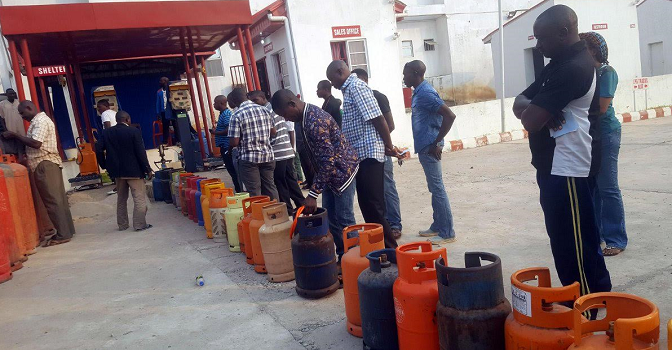Retail prices have skyrocketed in sections of Lagos and Ogun states, even though the National Bureau of Statistics (NBS) reports that the average cost of refilling a 5kg cylinder of liquefied petroleum gas has decreased from ₦8,243.79 in July to ₦6,404.02 in August 2025.
A kilogram of gas currently costs between ₦1,800 and ₦3,500, depending on the locality, according to a market survey by The Guardian, pushing many households to look for alternatives.
One customer at Ijeshatedo in Lagos called her experience “tiresome.”
“While filling stations sell slightly lower at ₦2,500 per kilogramme, retailers are selling between ₦3,000 and ₦3,500.” However, hundreds of consumers are waiting in intolerable lines,” she bemoaned.
The day before, she remembered, she had spent hours looking for gas before giving up. She claims that the situation has gotten “unbearable,” forcing some residents to turn to electric or charcoal choices.
inhabitants of Igando reported paying between ₦1,800 and ₦2,000 depending on the location, while inhabitants of Atan, Ogun State, claimed to have purchased between ₦2,000 and ₦2,500 per kilogramme under difficult circumstances.
Marketers Point the Finger at Refinery Maintenance and Strike
In an interview with the Guardian, Olatunbosun Oladapo, president of the Nigerian Association of Liquefied Petroleum Gas Marketers, blamed the price spike on internal maintenance at the Dangote Refinery and a brief disruption brought on by the Petroleum and Natural Gas Senior Staff Association of Nigeria strike.
“At the moment, I can state with confidence that the majority of our LPG supply is made domestically. There is very little importation. Actually, because local supply has grown so much, importing today could cost you money, Oladapo stated.
He clarified that the NLNG has supplied Port Harcourt in bulk, protecting the South-South from the shortage, even if the strike interfered with vessel berthing at Lagos terminals. He promised that once suppliers started loading on a large scale again, everything should soon return to normal.
Dr. Ayodele Oni, a partner at Bloomfield LP and a specialist in energy law, criticized the ongoing shortages in spite of increased gas output.
He claims that since a significant amount of the output is still exported, increased upstream production does not always result in increased domestic LPG supply.
“In March 2025, domestic gas sales increased by approximately 22% year-over-year to approximately 65,632 metric tonnes; however, a large portion of LPG is monetized through exports rather than being directed towards local bottling and retail,” he stated.

